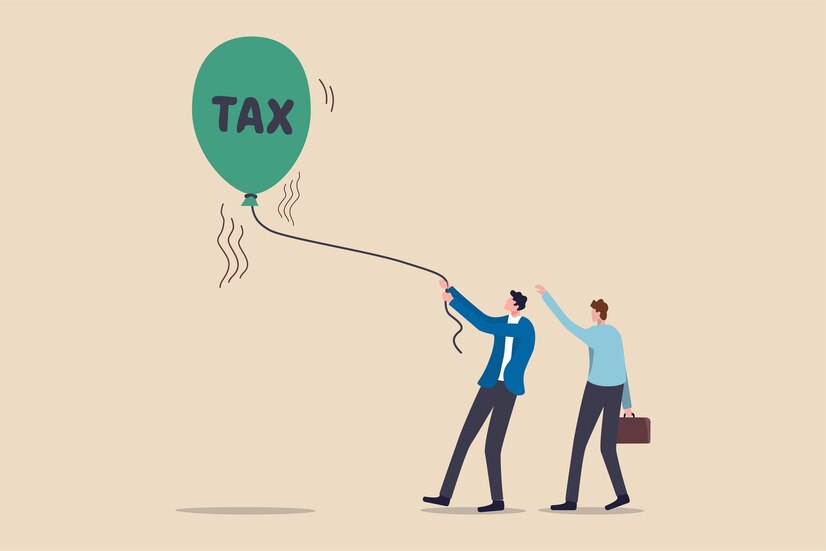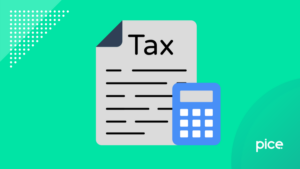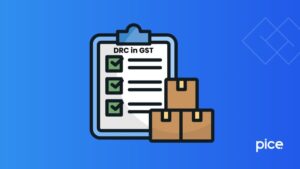Understanding the GST Rate on Balloons
- 18 Aug 24
- 9 mins

Understanding the GST Rate on Balloons
Key Takeaway
- GST (Goods and Services Tax) is a comprehensive, multi-stage tax levied on the manufacture, sale, and consumption of goods and services within a country.
- Balloons are classified under GST based on their material composition and intended use, affecting their applicable tax rate.
- The GST rate for balloons varies, typically falling between 5% to 18%, depending on their classification as either basic utility or luxury items.
- For balloon businesses, navigating GST compliance involves meticulous record-keeping, accurate classification, and staying updated on tax regulations.
- The GST rate directly influences consumer costs and purchasing decisions, especially for large-scale events where balloons are bought in bulk.
What is GST?

The Goods and Services Tax (GST) is a value-added tax levied on most goods and services sold for domestic consumption. It is a comprehensive, multi-stage tax: comprehensive because it covers most aspects of a nation’s economy including manufacturing, sale, and consumption of goods and services; and multi-stage because it is imposed at every step in the production process, but is meant to be refunded to all parties in the various stages of production other than the final consumer.
Essentially, GST is designed to replace a myriad of previous taxes such as sales tax, service tax, excise duty, VAT, and other local taxes. It is aimed at creating a single, unified market that boosts the economy and reduces the overall tax burden on goods, as the tax structure becomes transparent and driven by technology.
Classification of Balloons under GST

In the GST regime, balloons are typically classified based on their material composition and purpose. This classification is crucial as it determines the GST rate applicable to different types of balloons. For example:
- Latex Balloons: Most commonly used for decoration and entertainment, these are usually subject to a standard GST rate applicable to entertainment and novelty items.
- Mylar Balloons: Often used for specialized decorations and promotional activities, these may attract a different GST rate due to their different material composition and longer usability.
- Hot Air Balloons: Being part of recreational or transport services, hot air balloons might be classified differently, possibly under services with a specific GST rate applicable to leisure or transport services.
Each type of balloon must be accurately classified to ensure correct GST compliance. This classification affects how businesses invoice their products and how they report their taxes, making it an essential aspect of managing a business in the balloon industry under the GST framework.
GST on Balloons
The GST rate for balloons generally depends on their type and usage, and can vary between different jurisdictions within the same country. Typically, most balloons used for decoration or entertainment purposes, such as latex and Mylar balloons, are taxed at the standard GST rate applicable to goods, which could range from 5% to 18% depending on the country's tax policy and the specific classification of the balloon. For example, in some regions, basic utility items might attract a lower rate, while luxury or non-essential goods are taxed higher.
It's important for businesses and consumers to be aware of the exact GST rate for balloons as this directly affects pricing and purchasing decisions. The rate can be confirmed through tax bulletins or official GST portals that provide updated rates for various commodities.
💡If you want to pay your GST with Credit Card, then download Pice Business Payment App. Pice is the one stop app for all paying all your business expenses.
Impact of GST Rate on Balloon Businesses
The GST rate has significant implications for businesses involved in the production, wholesale, and retail of balloons. Here are some of the ways in which the GST rate impacts these businesses:
- Pricing Strategy: The GST rate influences how businesses price their products. A higher GST rate may lead to higher retail prices, which could reduce demand, particularly if consumers deem the increased cost as prohibitive. Conversely, a lower GST rate could lower the final price consumers pay, potentially increasing demand.

- Cash Flow: GST is a cash-based tax, meaning it is due at the point of sale when invoicing customers, not when the money is actually received. For businesses, particularly small and medium-sized enterprises, this can impact cash flow. Businesses need to ensure they have adequate systems and processes to manage this aspect effectively.
- Compliance and Reporting Requirements: Different GST rates necessitate meticulous record-keeping and reporting. Businesses must track their sales and GST collections accurately and report them appropriately to tax authorities. Failure to comply can lead to penalties, interest, and increased scrutiny from tax auditors.
- Competitiveness: In markets where multiple vendors offer similar products, the GST rate can affect competitiveness. Companies might absorb some of the GST costs to keep prices low and stay competitive, which can impact their profit margins.
- Adaptability to Changes: Tax rates are subject to change based on government policy. Businesses must stay informed about these changes to adapt their pricing and compliance processes accordingly. This requires a flexible approach to business planning and financial management.
How Consumers Are Affected
The GST rate on balloons directly impacts consumers primarily through the cost of purchase. Here's how different aspects of GST influence consumer behavior and spending:
- Cost Impact: A higher GST rate increases the overall cost of balloons, which may affect consumer decisions, especially when planning events or celebrations. Consumers on a budget might opt for fewer balloons or seek cheaper alternatives if the GST pushes prices higher.
- Price Transparency: One of the advantages of GST is that it simplifies tax structure and makes pricing more transparent. Consumers can see exactly how much tax they are paying on their purchases, which helps in making more informed buying decisions.
- Budget Planning: For large-scale events like weddings or corporate events where balloons are purchased in bulk, the GST rate can significantly affect the budget. Event planners and individual consumers need to account for this tax when planning their expenditures.
- Cost Sensitivity: In regions with higher GST rates, consumers might become more sensitive to prices, which can affect demand. This sensitivity can lead businesses to absorb some of the tax burdens to maintain their sales volume.
Navigating GST Compliance for Balloon Sales
For businesses in the balloon industry, navigating GST compliance is crucial not only to avoid penalties but also to ensure smooth operations. Here are key considerations for maintaining compliance:
- Accurate Classification and Invoicing: It's essential for businesses to classify their balloon products correctly under the GST regime to ensure the right tax rate is applied. Accurate invoicing must include the GST amount based on the appropriate rate, which requires up-to-date systems and software.
- Regular Updates on GST Regulations: Tax rates and regulations can change, and it's crucial for businesses to stay informed about these changes. Regular communication with tax professionals or frequent visits to the official GST portal can help keep business owners updated.
- Efficient Record-Keeping: Maintaining detailed records of all transactions, including purchases and sales of balloons, is necessary for compliance. Efficient record-keeping helps during the annual tax filing and any audits that might occur.
- Using Technology for Compliance: Implementing robust accounting software that can handle GST calculations, return filings, and compliance checks can greatly reduce the burden on businesses. Many software solutions are designed specifically to cater to the needs of businesses under the GST system.
- Educating the Team: Training staff about the basics of GST, including how it affects pricing and invoicing, is vital. This ensures that everyone in the organization understands how their actions impact compliance.
Navigating GST compliance effectively minimizes legal risks and helps maintain a positive reputation with customers who value transparency and accountability in business practices. For balloon sales, where variations in product type and use-case can complicate tax calculations, a diligent approach to compliance is especially important.
 By
By 
















